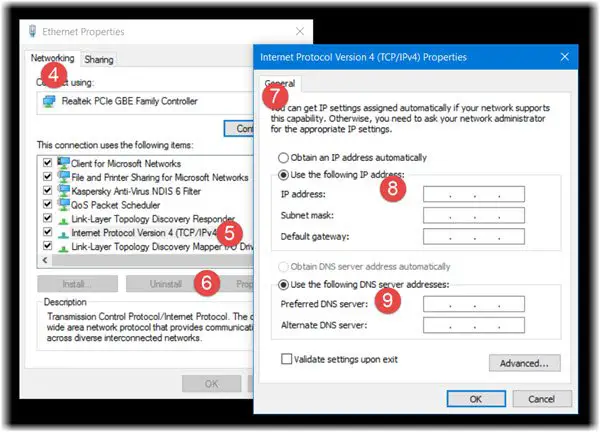
:max_bytes(150000):strip_icc()/002_find-printer-ip-address-4176356-dbae9541857a4b1f8e995754c0c446c8.jpg)

The constant communication does not allow the system to clear the ARP cache entry, so the writer will continue to try sending data to the IP address of the printer.Īllowing the System to Automatically Clear the ARP Cache This happens when a writer on the iSeries is constantly attempting to write to the printer. This typically occurs when the ARP cache on the system has been unable to "timeout" old information and replace it with new information.
#CHANGE PRINTER IP ADDRESS PDF#
The IBM Infoprint Server for iSeries product (5722IP1) that can be used to convert spooled files to Adobe Acrobat PDF format and optionally send the PDF file in an email, store the PDF file in a stream file in the Integrated File System (IFS), store the PDF file is a *USERASCII spooled file, or a combination of these.This document discusses an issue where you are unable to PING a printer from the IBM i system using a host name after changing the IP address in the printer or print server hardware. If You Are Converting Spooled Files to PDF instead of Printing them to a Printer
#CHANGE PRINTER IP ADDRESS PC#
Refer to the documentation for the version of Client Access or iSeries Access for the requirements.įor information on configuring an NetServer print share, refer to these documents:Īdding a Printer that Uses an IBM i NetServer Print ShareĬonfiguring Windows 95/98/NT/2000/XP/7 to Fax PC Output Using FAX/400 and IBM iSeries NetServerįor information on configuring an IBM i NetServer print share for use with Facsimile Support/400 (FAX/400), please refer to the following document: If You Are Printing from a PC to a Printer on an IBM i Systemĭepending upon the version of System i Access for Windows (also known as iSeries Access for Windows or Client Access/400 in earlier versions), the printer can be installed on the PC as a network printer or it can be set up under IBM AS/400 NetServer or IBM iSeries NetServer.

Printer Passthrough or Remote Output QueuesĬreating a Dummy Device Description to Use with a Remote Output Queue (RMTOUTQ)Ĭonfiguring SNADS and Setting Up SNA Distribution Services

For additional assistance configuring or troubleshooting SNA, contact our communications team.įor information on configuration communicating over SNADS, refer to these documents: Also, the IBM-supplied subsystems QSNADS and QSYSWRK, the Mail Server Framework job QMSF, and the Object Distribution job QNFTP all must be active. The requirements for printing using SNA are that a communications line, controller, and device description are configured for APPC or APPN support. If Your Printer Is Attached to the Network and Using SNA The Lexlink protocol cannot be routed across networks, so the router would need to be configured to bridge the Lexlink protocol.įor information on configuring *LAN 3812 Lexlink device descriptions, refer to this document:Ĭonfiguring a *LAN 3812 LEXLINK Device Description The requirement for this configuration is that the printer is attached to a Lexmark network adapter that can use the Lexlink protocol, such as the Lexmark MarkNet XLE or the MarkNet Pro, or that it is a Lexmark printer with an internal Lexmark network card. If Your Printer Is Attached to the Network and Using the Lexlink Protocol The sections on the various options will list some additional requirements for that type of configuration. The requirements for all network-attached printers using TCP/IP are that the network adapter is compatible with the printer and it has a static TCP/IP address. Printer Model Settings for Host Print Transform (HPT) Information on Printers from Various Manufacturers If your printer is attached to the network and is using TCP/IP to connect, the options for configuring the printer are:įor information on ASCII printers from various manufacturers, in particular on whether they can be configured using a *LAN 3812 PJL device description, *LAN 3812 SNMP device description, *LAN 3812 IPP device description, or Remote Output Queue (RMTOUTQ), refer to these documents: If Your Printer Is Attached to the Network Using TCP/IP


 0 kommentar(er)
0 kommentar(er)
